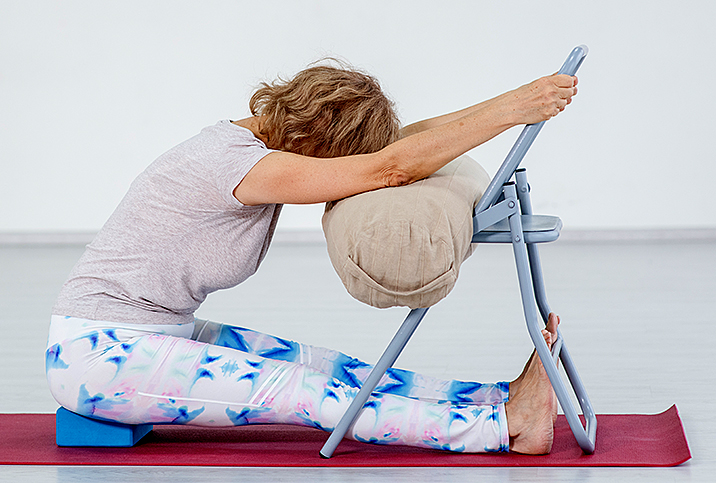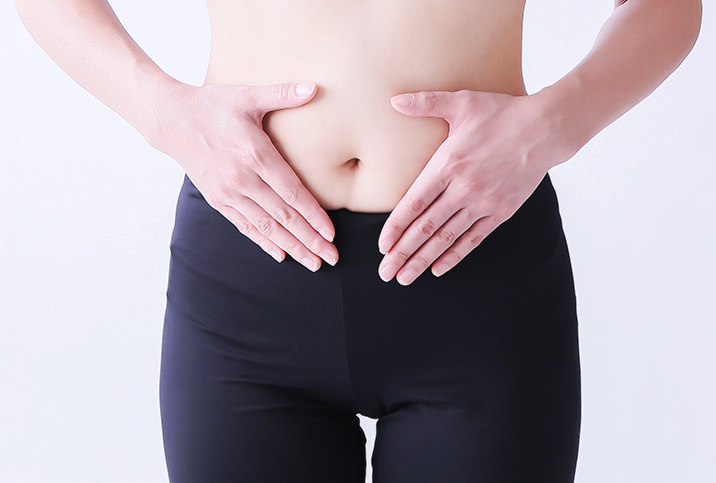Kegels Have Benefits for Both Men and Women

When you think of Kegels, there's a good chance you assume these pelvic floor exercises are just for women. Turns out, that's not true. Kegels can be beneficial for both the male and female anatomy; it's simply the exercise's benefits that can differ for each sex.
Kegels for men
"There is no difference between someone being born with vaginal anatomy doing a Kegel and someone born with penile anatomy doing a Kegel. We all have the same muscles…Kegels are…essentially push-ups for your pelvic floor muscles, [and] we all do push-ups the same," said Ashley Rawlins, D.P.T., a physical therapist in Dallas and the clinical learning and development lead at Origin physical therapy.
"Kegels are helpful for anyone, male or female, when you have pelvic floor symptoms that are related to underactive and weak pelvic floor muscles," Rawlins said. "Kegels for those born with penile anatomy may help with urinary incontinence, pelvic and low back support, and may also help to improve blood flow to the genitals to support sexual functioning."
In order to reap the benefits of Kegels for men, it's important to make sure you're doing the exercise properly.
"The correct Kegel form, or pelvic-floor contraction, consists of a full contraction—squeeze up and in—of the pelvic floor muscles, followed by a full and complete pelvic floor muscle relaxation. That's one repetition," Rawlins explained.
How do I know if I'm doing Kegels correctly?
The most commonly recommended way to make sure you are doing Kegels properly is, while you are urinating, to try to stop the flow of urine by contracting your pelvic floor muscles. However, interrupting your urine flow is not something you should be doing on a regular basis, so there are some other tricks you can do more frequently, Rawlins suggested.
"When I instruct patients to 'do a Kegel,' I tell them to contract their muscles as if they were trying to stop urinating. They can hold and relax and repeat that. We advise at least twice a day. I tell my patients to do sets of 10 when they are at a stoplight in traffic," said Tara Scott, M.D., medical director at Forum Health in Akron, Ohio.
The sitting test
Another way to test if you're doing your Kegels correctly is to do them while you are sitting up straight on a hard surface by rocking forward onto your sit bones. When you squeeze your muscles into a contraction, you should be able to feel the space between your anal opening and the opening of the base of the penis (also known as your perineum), then lift up and away from the surface you are sitting on. If you are doing your Kegels correctly, when you release your muscles from the contraction, you should be able to feel them soften and drop back into your chair, Rawlins advised.
You can tell if you're doing your Kegels properly if when you contract your pelvic floor muscles, your tailbone moves inward or "tucks." You should be able to feel your tailbone moving (even with your fingers) when you contract your pelvic floor muscles, Rawlins said.
Take a look
Another way to make sure you're doing your Kegels the right way is to use a handheld mirror.
"Go ahead and take your pants and underwear off. Then hold a mirror between your legs and find your perineum again. When you contract your muscles you can see your perineum draw up and in toward your head," Rawlins explained. "Look back toward your anus. When you contract your pelvic floor, you can see your anus close and tighten…a proper pelvic floor contraction will pull your penis in toward your body."
How often should you do Kegels?
Similar to any other type of exercise, you need to do Kegels frequently to see and feel the benefits. How often you should be doing Kegels depends on how much strengthening you need.
"As a general rule for any skeletal muscle in the body, you need to train consistently for at least eight weeks to see some adaptation in your muscle strength," Rawlins said. "The specifics are just too different for everyone to say for certain."
Kegels' impact on urinary incontinence
There are many different types of urinary incontinence. Kegels are often suggested to patients who have stress urinary incontinence, which is incontinence during instances of increased intra-abdominal pressure. Your bladder and urethra muscles are not supportive or strong enough, so when you cough, jump or laugh, urine can leak out. Kegels can help improve the support and position of the bladder and closure of the urethra to keep urine where it is supposed to stay until you mean to empty it, Rawlins explained.
Pelvic floor muscle dysfunction and Kegels
There is evidence of Kegels being extremely effective for treating pelvic floor muscle dysfunction (PFMD), which is diagnosed as the inability to coordinate and relax your pelvic floor muscles to have bowel movements. Symptoms of PFMD include straining to make a bowel movement, having stool or urine leakage, constipation and the frequent feeling of having to urinate.
"Research shows us Kegels can be extremely effective in treating PFMD in [patients] with underactive and weakened or injured pelvic floor muscles," Rawlins said.
There are some cases where Kegels might not be able to help PFMD.
"When pelvic floor muscles are dysfunctional, it's not always because they need to be strengthened. Some muscles need flexibility, improved control of movement and coordination, while some just need to be reacquainted with," Rawlins said. "Everybody is different and has different needs."
Kegels and sex
Kegels can improve your sex life by improving blood flow to the genitals to support sexual function, Rawlins said. Kegels' ability to strengthen your pelvic floor muscles could help reduce premature ejaculation, Scott explained.
"But as a caveat, if you have tight and overactive pelvic floor muscles, Kegels may make sex painful, more painful and possibly add an extra challenge to arousal and orgasms," Rawlins said. "Pain or fear of pain is a huge mood killer."


















